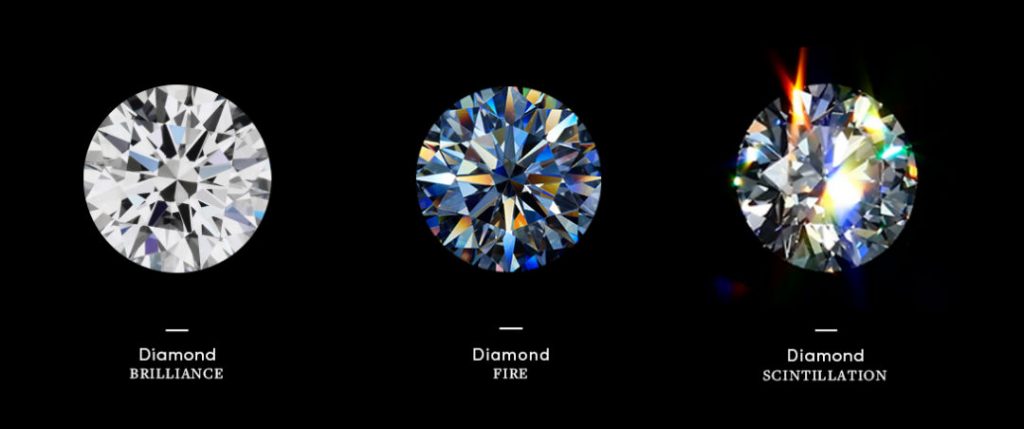Cushion vs. Radiant Cut Diamonds: What’s the Difference and Which Should You Choose?
If you're hoping to get engaged soon, a glance at your Google search history likely reveals a trail of engagement ring searches. There’s probably a clear pattern reflecting the styles you prefer. You may find yourself taking a second glance at rings with similar center stones. Perhaps they’re square with rounded edges, or maybe they all have amazing brilliance.
You may not even realize it, but you likely have a signature jewelry style.
Even if you have a clear preference, the sheer variety of diamond shapes and cuts can quickly become overwhelming. You might think you’ve settled on a favorite, but there’s a good chance you haven’t explored all the options just yet.
If you find yourself stuck choosing between two similar diamond cuts, you may be looking back and forth between a cushion cut and a radiant cut diamond. They both have that square or rectangular shape and sparkle beautifully, but their differences can affect your final decision.
Because the center stone is usually the first thing people notice in an engagement ring, it’s a decision that deserves careful thought. While most diamonds sparkle beautifully, choosing a shape that truly reflects your personality is key. If you’re torn between cushion and radiant cuts, we’re here to help. Let’s break down what makes each one unique so you can make a confident, informed choice—and fall completely in love with your ring.
Cushion Cut Diamond
Cushion cut diamonds have seen a resurgence in popularity over the past decade, largely thanks to the current generation’s love for vintage-inspired styles—a look the cushion cut delivers in abundance.
The cushion cut diamond can be either square or slightly rectangular, but its defining features are the rounded corners and gently curved sides–hence the nickname, “pillow cut.” The majority of cushion cuts have 58 facets, though this can vary slightly depending on the exact shape and how the stone is cut. This diamond shape has beautiful brilliance, bringing a nice sparkle to your jewelry.
Cushion cut diamonds were discovered in the 19th century, well before the round brilliant cut became the most popular diamond shape. They are often set in vintage style engagement rings, especially halo designs. They have a soft romantic look and are easy to set in a variety of setting styles.

Radiant Cut Diamond
The radiant cut diamond is a combination of both the emerald cut and the round brilliant cut. It was discovered in the 1970s by Henry Grossbard, who wanted to create a diamond cut that was as elegant and structured as the emerald cut, yet as brilliant as the round brilliant cut. He certainly did deliver.
The radiant cut diamond can be either square or rectangular, but always has trimmed, beveled corners and 70 facets that truly enhance its sparkle.
It’s hard to say specifically that the radiant cut is set in one type of design more than another. It is so versatile that it can truly fit any design, from solitaires to halo designs. The trimmed corners reduce a lot of the risk of chipping, which is so prevalent with princess cut diamonds. For this reason, there’s no need to set the radiant cut in v-tip prongs.

Shape and Style Differences
Both have a square or rectangular shape with softened corners, but their overall look is different.
- Cushion cuts have curved edges and a softer, more romantic appearance.
- Radiant cuts have straighter lines and a sharper look, making them bold and modern.
The aesthetic difference between the two can determine the setting you choose.
- Cushion cuts are popular in halo settings, antique designs, or solitaires.
- Radiant cuts often look best in contemporary settings.
Sparkle: Brilliance vs. Fire
Brilliance is the white light reflected from the stone, while fire is the rainbow-colored flashes you see when light hits the stone at the perfect angle.

- Cushion cuts have deeper pavilions and larger facets, which give off a soft, glowing sparkle as opposed to a bright sparkle. They can have blocky flashes of fire or what is referred to as “crushed ice,” which is lots of sparkle scattered around without a pattern.
- Radiant cuts focus on brilliance, attributed to their 70 facets, which are designed to reflect as much light as possible. They can give off a disco ball effect under the perfect bright lights, and do exhibit more brilliance and fire than cushion cuts.
Clarity and Color
- Radiant cuts can hide flaws easier because of the 70 facets and intense sparkle. They can also hide a lower color grade (for the same reasons).
- Cushion cuts tend to show inclusions and color more readily because of their large facets. This is something to especially pay attention to if you’re purchasing a large diamond.
Price Differences
- If you’re determining pricing per carat, cushion cuts are typically more affordable since they are more common and not as brilliant.
- Radiant cuts are more expensive because they are more complicated to facet and therefore not as many cutters produce radiant cuts, i.e. they're more rare.
- Regardless of the diamond shape, pricing will be influenced more by the cut grade, clarity, color, and carat weight of the stone. This is spelled out in more detail here. Shape is only one factor that contributes to diamond (and other gemstone) pricing.
Final Considerations
Choosing between a cushion cut and a radiant cut diamond ultimately comes down to personal style and which one resonates most with you as the centerpiece of your ring. If you’re drawn to vintage style or romantic designs and love a soft sparkle, the cushion cut might be a perfect match. However, if you prefer bold, modern aesthetics and want the most sparkle possible, the radiant cut would be a great choice. There truly is no wrong answer; just choose the one that speaks to you since this is a piece you’ll wear every day.

